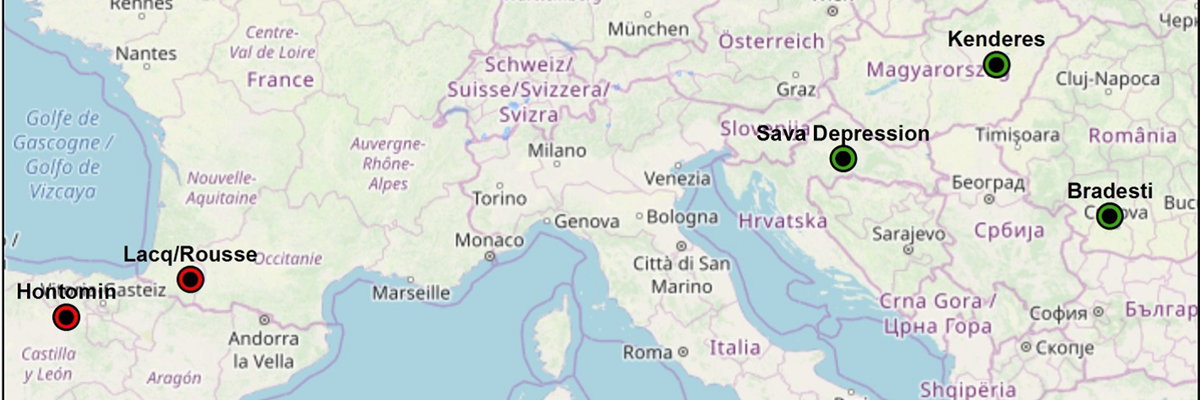Study on new pilot and demonstration project opportunities in Europe

ENOS called for proposals for new onshore CO2 storage pilots and developped six
conceptual case studies on selected sites:
- Sava Depression in Croatia
- Havnsø in Denmark
- Kenderes in Hungary
- Vilkyciai in Lithuania
- Dziwie in Poland
- Brădeștiin Romania
The portfolio of the suggested pilots has excellent geographical spread – if implemented, the new projects will bring CCS knowledge and practical experience to European regions with limited development of the technology so far, including the South-Eastern and Central Europe and the Baltic Sea region. All these regions have large CCS deployment potential lying in numbers of emission intensive facilities in both energy and other industrial sectors. In addition to testing and verification of the technology in local conditions, the pilots will also serve as an unsubstitutable element of practical demonstration of the CCS technology to local, national and regional stakeholders, starting from politicians and policy makers, through regulators, industry representatives and research community, to local population, general public and media.
Implementation of the pilots would also unlock the geological storage potential of important supraregional geological structures with promising properties and prospects of further development, like the Pannonian Basin, the Baltic Basin, the Moesian Platform, as well as the Danish basin and the Central Poland area. All of these regions have seen historically significant hydrocarbon production and their thick sedimentary successions render large potential for CO2 geological storage. The chosen locations are also either in connection with CO2-EOR possibilities (like in Lithuania or Croatia), or try to make use of the existing deep wells in the gas or oil fields that are either depleted or soon to be depleted (in Romania and Hungary). A possibility to study synergy with deep geothermal project is indicated in the Hungarian project proposal. The most favourable geological conditions to demonstrate the safe storage in structurally defined aquifers are presented in the Polish and Danish case studies. Geological conditions for significant upscaling are demonstrated in the case studies from Denmark, Lithuania, Romania and Hungary. The Croatian case study works with three possible scenarios; involving an ongoing CO2-EOR project and two small depleted oil fields.
In addition, a number of common success factors have been identified that have facilitated and enabled the success of international CO2 storage pilots worldwide.


